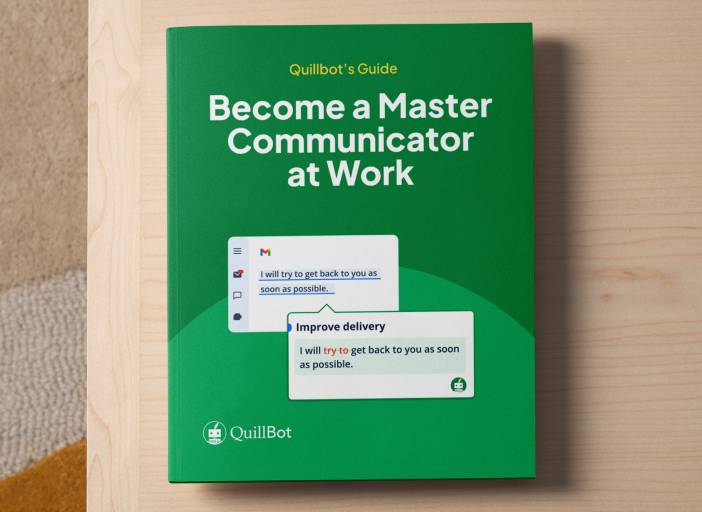How to Write SEO Titles With an SEO Title Generator
You’ve got the content: a blog post ready to go online, a YouTube video edited to perfection, or a new product page up on your website. But the title? Still blank. Or worse, forgettable. And without a strong, SEO-friendly title, even your best content might never get seen.
Instead of second-guessing every word or diving deep into SEO research, you can use an AI tool to instantly generate meta titles that are optimized to rank, attract clicks, and match the purpose of your content, whether it’s for your blog, website, or next big campaign. It’s a practical solution for bloggers, creators, and business owners who want better titles fast, without needing advanced SEO expertise or extensive resources.
Not sure where to begin? QuillBot’s free AI SEO title generator can help you quickly come up with titles that boost your rankings and get your content the attention it deserves.
What is an SEO title?
An SEO title (also called a meta title) is simply the headline that appears in search engine results and at the top of your browser tab when someone visits your page. It’s not just any title; it’s thoughtfully designed to catch attention, include relevant keywords, and give both search engines and people a clear idea of what your content is about.
Let’s say you run a dog walking service in your town. If someone searches for “dog walker near me,” you want your website’s title to pop up and make them want to click. Instead of a generic title like “Welcome to Our Website,” a good SEO title would be something like “Trusted Dog Walking Service in [Your Town] | Friendly & Reliable”.
This title tells search engines exactly what your page offers (dog walking), where it’s available (your town), and adds a little extra that appeals to potential customers (friendly and reliable). That’s what makes it SEO-friendly: it’s clear, descriptive, and includes keywords your customers might use when searching online.
In short, an SEO title helps your blog, website, or marketing campaign stand out in search results, making it more likely people will visit your page.
How to write an SEO title
Here’s what you need to keep in mind to create titles that get noticed and clicked:
- Identify your target keyword and understand search intent. Start by choosing your main keyword—“dog walking, for instance.” Then type variations of it into Google to see what comes up. For example, if you see mostly how-to articles and guides, people want information about dog walking. If you see local business listings and service pages, they’re ready to hire a dog walker. This is called search intent, and it should inform how you phrase your title.
- See what already ranks. Type your keyword into Google and scan the top results. What do those titles have in common? Are they local? Do they highlight benefits like “affordable” or “certified”? Use that insight to shape a title that fits but still stands out.
- Include the most important keywords. Choose one or two terms people search for (like “dog walker,” “pet care,” or your city name), and place them early in your title for better visibility.
- Keep it short and readable. Aim for 50–60 characters so that your full title appears on the search engine results page (SERP). Anything longer may get cut off.
- Appeal to humans, not just algorithms. A good title tag increases your click-through rate (CTR) by tapping into what people care about, be it convenience, trust, or affordability. Would you click on your own title? If not, keep refining it.
- Avoid keyword stuffing. Cramming in too many keywords makes your title awkward and hurts SEO. Prioritize clarity over repetition. For example, avoid “Dog Walker Dog Walking Dogs Boston Pet Care Services.” It’s just confusing, and it will only hurt your rankings.
Following these steps helps ensure your SEO title does its job: showing up in the right searches and making people want to click. Need help putting all this into action? An SEO title generator can do the heavy lifting.
Using an AI SEO title generator
While the manual approach works well, it can be time-consuming: researching search intent, analyzing competitors, and writing the perfect 50-60 character title for every blog post or landing page adds up quickly.
That’s where AI SEO title generators come in. These tools can analyze your content, suggest relevant keywords, and generate multiple optimized title options instantly. For example, let’s say you’re writing a blog post about separation anxiety in dogs. You can prompt QuillBot’s free AI SEO Title Generator like this:
You can also tweak the results to match, for instance, the tone you’re aiming for:
Try out a few prompts, experiment with tone settings, and pick the title that feels right for your audience. A well-optimized title is often the first step toward better traffic.
Frequently asked questions about SEO titles
- What makes a title SEO-friendly?
-
An SEO-friendly title includes relevant keywords, matches search intent, is easy to read, and encourages clicks. It avoids keyword stuffing and focuses on clarity and usefulness. Not sure where to begin? QuillBot’s AI SEO title generator can give you ideas for SEO-friendly titles, whether it is for your blog, video, or online store.
- What’s the difference between a meta title and a regular headline?
-
A meta title, also known as an SEO title, is the version that appears in search engine results and at the top of a browser tab. While your blog post or article headline is written for your readers, the SEO title is specifically optimized to help your content get discovered through search. It might use more targeted keywords, be shorter, or highlight different details to improve visibility and clicks.
Need help writing the perfect SEO title? Try QuillBot’s free AI SEO title generator for quick, optimized suggestions.
- What are common types or formulas for SEO titles?
-
There are several tried-and-true SEO title formats that grab attention and drive clicks. These include:
Numbered lists: Titles that promise a clear, organized list of tips or ideas, like “7 Easy Ways to Train Your Dog at Home.”
How-to questions: These match informational search intent, such as “How to Choose the Right Dog Breed for Your Lifestyle.”
Scarcity or insider tips: Titles that suggest exclusivity or urgency, like “5 Secrets Only Professional Dog Trainers Know.”
Big promises or ultimate guides: These suggest comprehensive value, as in “The Ultimate Guide to Raising a Happy, Well-Behaved Puppy.”
Each of these SEO title types works because they clearly tell the reader what to expect and make it hard to resist clicking.
Want help generating titles like these? Use QuillBot’s AI SEO title generator to get ideas in seconds.
Cite this Quillbot article
We encourage the use of reliable sources in all types of writing. You can copy and paste the citation or click the "Cite this article" button to automatically add it to our free Citation Generator.
QuillBot. (2025, July 25). How to Write SEO Titles With an SEO Title Generator. Quillbot. Retrieved August 11, 2025, from http://qbot.seotoolbuy.com/blog/ai-writing-tools/how-to-write-seo-titles/



